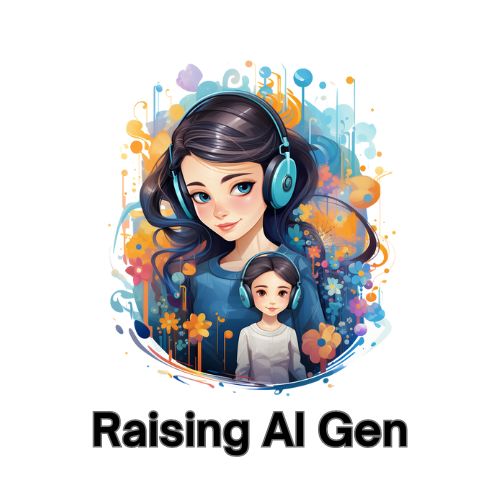Welcome to the cutting edge of inner tranquility and mental sharpness. In an era where our minds are constantly bombarded with digital stimuli, finding peace can often seem like an elusive quest. However, the advent of AI-powered mindfulness training has opened up new avenues for achieving greater focus and a more profound sense of calm. Leading the charge in this revolutionary blend of mindful technology and meditation is the Muse S headband, a wearable device that uses artificial intelligence mindfulness techniques to guide you towards a more centered and serene state of being.
The marriage of technology and ancient meditation practices via AI mindfulness offers a tailored approach to personal wellness. With real-time feedback on your brain’s electrical activity through EEG neurofeedback, you have the opportunity to train your mind for sharper focus and prolonged attention span, thus cementing technology mindfulness as a pivotal component of modern self-care. Embrace the possibilities with us as we delve into the world of AI-powered mindfulness training.
Key Takeaways
- AI mindfulness represents a modern approach to achieving mental clarity and reducing stress.
- Devices like the Muse S headband combine meditation practices with cutting-edge technology.
- Neurofeedback and real-time brain activity monitoring are at the core of AI-powered mindfulness.
- The fusion of mindfulness and technology provides a structured path towards enhanced personal well-being.
- Adopting technology mindfulness helps navigate and offset the digital distractions of our times.
- With AI personal growth tools, users report improvements in focus, stress management, and sleep quality.
Embracing the Future with AI-Powered Mindfulness Training
In the ongoing quest for mental clarity and emotional stability, the synthesis of technology and ancient wisdom through AI-powered mindfulness training is emerging as a transformative force in personal development. This innovative approach to mindfulness training and ai personal growth leverages the precision of modern gadgets and the depth of time-tested meditation techniques. It is tailored to meet the needs of a society that is ever more reliant on digital connections, providing a counterbalance to our fast-paced lifestyles with scientifically-grounded mindfulness techniques.
The Intersection of Technology and Mindfulness Practice
The fusion of mindfulness techniques and state-of-the-art technology has culminated in tools such as EEG headbands, which serve as mediators between the buzzing of our brains and the stillness we seek. Devices like these, particularly those spearheaded in design and function by the Muse S headband, are revolutionizing how we approach ai meditation. By blending seamlessly into our daily regimens, these innovative tools usher in an era of digital mindfulness that aligns with the growing inclinations towards AI-enhanced lifestyles.
Understanding the Mechanics Behind AI Meditation Techniques
The mechanics of AI meditation are rooted in the accurate tracking and analysis of brainwave patterns, using EEG neurofeedback as a window into the user’s moment-by-moment mental activity. Through a symphony of sensors, algorithms, and user interfaces, individuals are able to view and understand their cognitive processes in real time, steering their minds toward tranquility and sharpened focus. Such data-driven insights into mental states propel ai personal growth, establishing new standards for personal optimization.
Comparative Analysis of AI Mindfulness and Traditional Methods
Traditional mindfulness training has commonly entailed self-guided techniques championed by meditation practitioners. However, AI mindfulness stands apart by offering structured and personalized paths, complete with training plans complemented by guided sessions. This comparative analysis lays the groundwork for understanding the unique advantages of AI-driven mindfulness, such as its tailored feedback loops and convenience, which are not typically present in conventional meditation practices.
| Mindfulness Method | Features | Personalization | User Feedback |
|---|---|---|---|
| Traditional Mindfulness | Self-guided practice, time-tested techniques | Generally fixed methods | Self-assessment and introspection |
| AI Mindfulness | Real-time neurofeedback, guided sessions | Adaptive algorithms tailor experience to user | Data-driven insights provided by the device |
- AUpholding the synergies between technological advancements and ancient meditation disciplines
- Employing the Muse S headband and similar EEG neurofeedback devices for individualized mindfulness experiences
- Elevating the practice of self-awareness through AI mediation
- Promoting the progressive intersection of mind-enhancing technologies and traditional self-regulation methods
As we continue to explore the depths of our consciousness with the aid of AI, let us welcome this harmony of science and spirituality with open arms. In doing so, we harness the power of AI-powered mindfulness training to foster growth, resilience, and serenity in our daily lives.
Real-World Impacts of AI Mindfulness on Personal Growth

The paradigm shift towards integrating technology with traditional mindfulness practice has resulted in a burgeoning field where AI intersects with personal development. Numerous reports have emerged highlighting how such AI applications considerably enhance aspects of daily life. Through advancements like the Muse S headband, which embodies the convergence of mindfulness and artificial intelligence, individuals have witnessed significant improvements in their meditation experiences, attention spans, and sleep patterns.
This intersection of mindfulness practice and ai personal growth tools like the Muse S has paved the way for data-driven stress reduction and focus enhancement methodologies. Users appreciate the tangible results, although it’s recognized that outcomes can vary, with some finding the sensory input distracting. Yet, the broader narrative skewing towards the positive underscores the transformative potential of AI in mindfulness endeavors.
Leading corporations and educational institutions are progressively validating the effectiveness of AI-enabled mindfulness practices. There’s a growing trend to incorporate such technology within corporate wellness programs and scholastic curricula, underscoring a collaborative aim at fostering enhanced focus and well-being. Below displays how individuals and organizations are adopting AI mindfulness for personal and collective growth:
| Stakeholder | Integration Method | Reported Outcomes |
|---|---|---|
| Individuals | Personal use of AI mindfulness devices | Improved mental clarity, reduced stress levels, enhanced sleep quality |
| Corporations | Incorporation into wellness programs | Increased employee productivity, decreased burnout, better job satisfaction |
| Educational Institutions | Curriculum inclusion for student well-being | Improved student focus, lower anxiety levels, better academic performance |
In observing the beneficial outcomes reported by users of AI mindfulness tools, one can’t help but recognize the capacity for these technologies to supplement and elevate traditional practices. The emphasis on tailored experiences, underpinned by algorithmic learning and real-time neurofeedback, positions AI as a compelling companion in the journey toward maturity and mindfulness.
- Practitioners experience new depths in meditation aided by personalized feedback.
- Users tap into a deeper understanding of themselves, fostering a growth mindset.
- AI mindfulness tools operate as gateways to prolonged and elevated focus, with reported benefits spilling into various facets of users’ lives.
The narrative around ai personal growth tools is steadily becoming one of empowerment, practical value, and transformative potential. As society leans towards holistic well-being, the role of AI in complementing and enhancing mindfulness practice is slated for further exploration and adoption across diverse demographies and professional landscapes.
Innovative Tools: Attention Aid Headbands and Their Contributions to Wellness
Exploring the latest trends in mindful technology, we are witnessing an uplift in wellness through cutting-edge devices known as attention aid headbands. These headbands are not mere fitness fads; they are at the forefront of a significant shift towards enhanced mental wellbeing. Anchored by the Muse S headband’s pivotal role in this sector, we can appreciate the impact of such innovative gadgets on our daily lives.
Muse S Headband: Pioneering Mindful Technology
As a trailblazer in mindful technology, the Muse S headband encapsulates the essence of innovation in personal wellness. With its advanced EEG sensors and the inclusion of guided meditation exercises, the Muse S headband leads users through an intimate journey of self-discovery and mental refinement. This device is more than a product; it is an experience that harmonizes the confluence of technology and tranquility.
Neurofeedback and Mindfulness: A Synergetic Effect on Mental Health
Neurofeedback is an extraordinary tool when paired with mindfulness techniques. Many attention aid headbands, equipped with neurofeedback capabilities, offer users real-time insights into their cognitive state. This empowering data allows for tailored meditation sessions that adapt to the nuanced needs of each individual, thereby cultivating a synergetic effect that can uplift mental health to new heights.
Assessing Varieties of AI Headbands for Meditation and Focus
In the realm of mindful technology, numerous attention aid headbands are vying for attention. Each carries its hallmark traits, aimed at bolstering mental acuity or inducing more restful sleep. To aid in the selection process, we’ve assessed the top attention aid headbands on the market, evaluating them based on the sophistication of their technology, comfort in wearability, and overall value to the user. The table below presents a comparative look at what these headbands have to offer:
| Headband | Technology | Main Benefits | Comfort Level | Approximate Price |
|---|---|---|---|---|
| Muse S | EEG neurofeedback | Focus training, meditation guidance, improved sleep | High | $349 |
| NeuroSky Focus Pro | EEG neurofeedback & audio stimulation | Enhanced focus, stress reduction | Medium | $299 |
| Thync Relax Pro | Neuro-stimulation | Calm induction, stress management | Medium | $399 |
The matrix of options available reflects a wide spectrum of interests and preferences within the domain of mindful technology. This variety ensures that whether seeking to deepen meditation practices or looking for accessible methods to tackle daily stress, there is likely an attention aid headband well-suited for the job. With diligent research and reflection on personal needs, the right device can become an invaluable ally in the journey towards mental wellness.
The Art of Mindful Technology Use in Everyday Life
In the tapestry of modern living, digital wellbeing emerges as a crucial thread, woven intricately into our daily experiences. It’s the fine balance between harnessing the power of digital advancements and preserving our mental space. As we step into a world increasingly dictated by screens and notifications, a conscious effort to employ mindfulness exercises can be the compass that navigates us towards calmer shores. In this journey, AI-powered mindfulness training becomes the diligent guide that fosters harmony within our digitized routine.

Integrating Mindful Moments in a Digitally-Driven World
The realm of technology need not be a vortex of continuous distraction. Instead, it holds the potential to be a sanctuary where positive digital habits thrive. To achieve this, we incorporate mindful intervals—pauses where we tune into ourselves and tune out the digital chatter. These pockets of presence can be structured into our schedules through reminders to breathe deep or to step away from the keyboard and gaze into the natural world, even if momentarily. By adopting such practices, we pave the way for enhanced concentration and inner peace amidst the incessant digital buzz.
The Role of AI in Cultivating Mindful Digital Habits
The advent of AI-powered mindfulness training presents us with personalized strategies to pry away from the intricate web of information overload. AI guides us through the labyrinth of our minds, offering tailored sessions of meditation, prompting moments of stillness, and ushering in a sense of equilibrium. These intelligent systems encourage adherence to digital detoxification routines, making the daunting task of disconnecting not just feasible, but enjoyable. AI becomes the unwavering ally in the quest for mindful digital integration, a cornerstone in building a foundation of digital serenity.
Beyond the Screen: Physical Activities Enhanced by Mindful Tech
AI’s influence extends far beyond the glare of screens. It enhances physical practices such as yoga and walking meditations, providing insights that lead to synchronization of body and mind. These mindfulness exercises imbued with AI’s analytical eye, allow for a more nuanced understanding of our physiological responses to stress and relaxation. It is this melding of the abstract and concrete, the digital and physical, that crystallizes the concept of digital wellbeing. By inviting AI to assist in our mindful endeavors, we do not just survive in a digitally dominant world—we thrive with poise and purpose.
Frequently Asked Questions
| Question | Answer |
|---|---|
| Is Andy Puddicombe still Buddhist? | Andy Puddicombe, co-founder of Headspace, remains dedicated to Buddhist teachings and meditation practices, which are foundational to the ethos of Headspace. |
| Does Headspace use AI? | Yes, Headspace utilizes AI to personalize mindfulness experiences, offering tailored meditation and mindfulness exercises based on user preferences and behavior patterns. |
| What is the vital AI meditation app? | Muse is a vital AI meditation app known for its innovative use of biofeedback technology to enhance mindfulness practice. |
| How does AI enhance mindfulness training? | AI enhances mindfulness training by providing personalized recommendations, real-time feedback, and adapting interventions based on user data, thus making mindfulness practice more effective and engaging. |
| Are there privacy concerns with AI-powered mindfulness tools? | Yes, privacy and data security are significant concerns with AI-powered tools, as they often involve personal data. Ethical use of AI in mindfulness requires strict adherence to privacy laws and user consent. |
| Can AI in mindfulness replace human instructors? | While AI can augment mindfulness training, it cannot replace the empathy and human connection provided by instructors. The best approach combines AI insights with human-led guidance. |
Further Reading
| Title | Link |
|---|---|
| Personalized Spiritual Affirmations for Deeper Connection | Read More |
| Dream Analysis with AI: A Revolutionary Journey | Read More |
| Virtual Reality Spiritual Healing Experiences | Read More |
| Spiritual Gamification Apps for Inner Growth | Read More |
| AI Monitoring for Teen Safety: A Parent’s Guide | Read More |
| AI for Nurturing Healthy Eating Habits in Kids | Read More |





